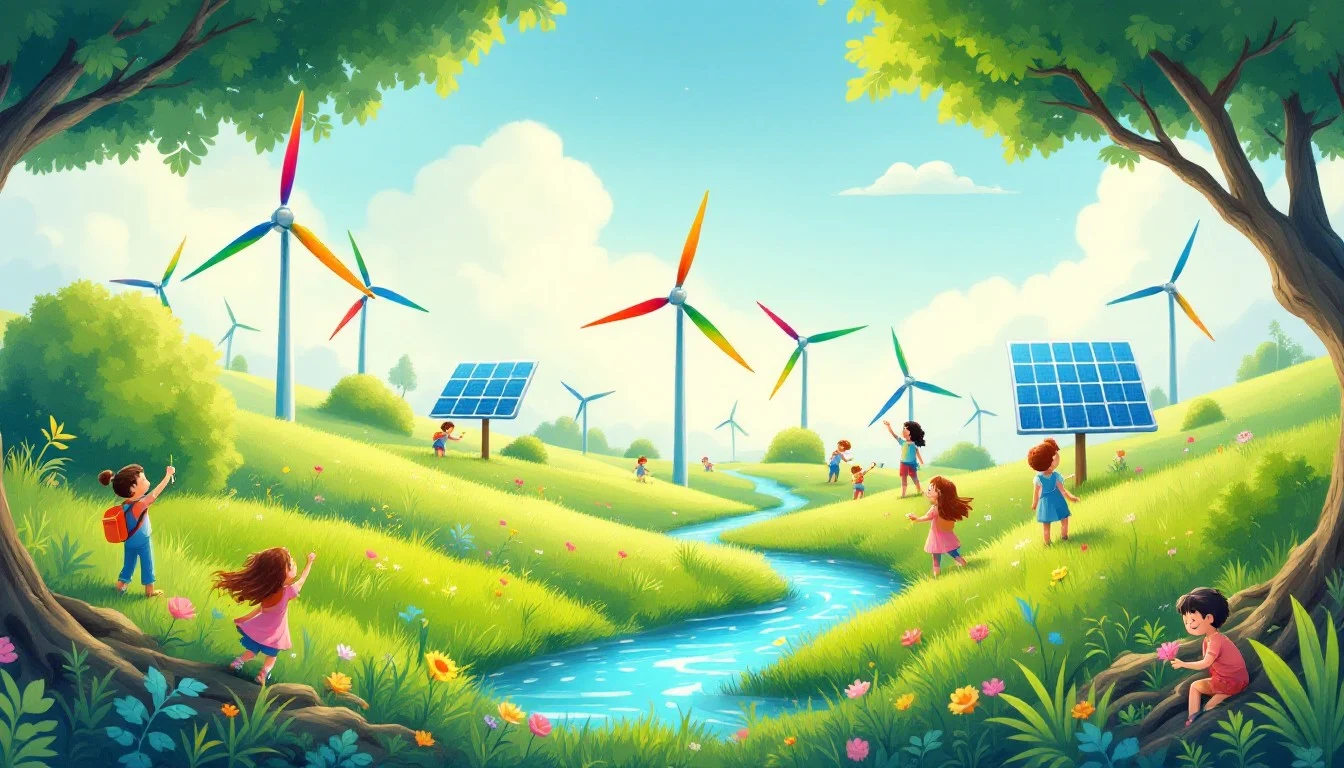The world’s energy crisis is not just a looming threat—it’s a challenge already at our doorstep. Rising global energy consumption, surging prices, and increasing carbon emissions have forced every sector to rethink how they operate. Yet, among the chaos, the tech industry stands out as a beacon of hope. Through advanced technology, creative solutions, and bold commitments, tech companies are leading the way in tackling the energy crisis.
Let’s explore how the tech industry is turning bold ideas into real-world solutions, building a sustainable and energy-efficient future.
Understanding the Energy Crisis
Energy powers our lives. From the moment we charge our smartphones to the time we log in for work, we rely on a consistent and accessible energy supply. However, this convenience comes at a cost. Global demand for energy has skyrocketed in recent decades, leading to concerns about fossil fuel depletion, price volatility, and environmental damage from increased greenhouse gas emissions.
The energy crisis is fueled by more than just limited supply. Factors like geopolitical tensions, outdated infrastructure, and unequal energy distribution compound the problem. For Tier-1 countries, which drive much of the world’s technology and economic growth, finding scalable, sustainable energy solutions is vital—for both business and the planet.
Tech Industry’s Commitment to Sustainability
The tech industry’s massive energy appetite is no secret. Data centers, cloud computing, artificial intelligence, and global supply chains consume colossal amounts of electricity. But with power comes responsibility. The leading tech players have set ambitious sustainability targets and are innovating to make clean energy a fundamental part of their operations.
Leading by Example
- Major companies like Google, Apple, Microsoft, and Amazon have all pledged net zero or carbon-neutral goals within the next two decades. These initiatives are not just about public image—they’re transforming day-to-day operations, procurement, and even product design.
- The race to sustainability is sparking competition, with tech giants investing in renewable energy at scale and influencing suppliers to do the same.
Spotlight on Innovation: How Technology Drives Energy Solutions
1. Green Data Centers: Efficiency at Scale
Data centers are the heart of the digital world, enabling everything from search engines to streaming. But they also rank among the biggest energy users. To tackle this, the tech industry is prioritizing green data centers.
- Artificial Intelligence Optimizes Cooling: Advanced AI algorithms monitor temperature and energy use in real time, automatically adjusting cooling systems to prevent waste and boost efficiency.
- Water Conservation: Some modern data centers use air or evaporative cooling, drastically cutting water consumption.
Google, for example, has used machine learning to reduce energy used for cooling its data centers by up to 40%. This approach is now being adopted across the globe, setting new industry standards.
2. Investing in Renewable Energy
Renewable energy sources—wind, solar, hydro—are the backbone of clean power. The tech industry has gone all-in:
- Long-Term Power Purchase Agreements (PPAs): Tech companies sign contracts with renewable energy developers, funding projects that bring clean energy to the grid.
- Onsite Renewables: Installing solar panels on campuses and offices, building wind farms, and incorporating battery storage for round-the-clock green energy.
Apple uses 100% renewable energy in its offices, retail stores, and data centers. Amazon is the world’s largest corporate buyer of renewable energy, with a portfolio spanning wind and solar projects across multiple continents.
3. Smart Grid Technologies and Energy Storage
Traditional power grids struggle with balancing supply and demand, especially as renewable sources can be intermittent. Here, tech excels at adding ‘intelligence’ to make grids smarter and more resilient.
- Advanced Metering and IoT Devices: Tech companies deploy smart meters and IoT solutions to monitor real-time energy consumption, identify inefficiencies, and shift non-critical loads to off-peak hours.
- Battery and Storage Innovation: Cloud-connected batteries and demand-response systems store surplus energy and release it during peak demand, reducing the need for fossil fuel backups.
Microsoft’s partnership with battery companies is exploring new storage solutions to ensure backup power comes from clean, not carbon-heavy, sources.
4. Software Solutions for Energy Efficiency
Software is a silent force behind massive energy savings. Energy management platforms use big data analytics to optimize equipment usage, reduce waste, and provide actionable insights to facilities managers.
- Predictive Maintenance minimizes unplanned outages and energy leaks.
- Dynamic Scheduling and Load Shifting help companies avoid peak hours, trimming costs and stabilizing the grid.
Such solutions don’t just cut costs—they empower businesses, cities, and even homes to participate in tackling the energy crisis.
Tech-Fueled Innovations Beyond Big Tech
The ripple effect of tech-industry action goes far beyond Silicon Valley. Startups and scaleups are joining the movement, designing solar microgrids, blockchain-based energy trading platforms, and even peer-to-peer renewable energy sharing.
- Blockchain technology enables secure, transparent, and decentralized exchanges of solar power between neighbors, putting clean energy within reach for more people.
- Smart Home Technology: Connected thermostats, lighting systems, and appliances automatically adjust settings for optimal comfort and efficiency.
Innovation isn’t limited to hardware or software—it’s about harnessing data, connectivity, and creativity to crack the energy challenge from all angles.
The Impact: Environmental, Economic, and Social Benefits
Tackling the energy crisis is not just a win for the climate. It has cascaded benefits across society and the global economy.
Environmental Gains
- Lower Carbon Footprint: Clean energy and efficient operations mean fewer greenhouse gas emissions.
- Biodiversity Protection: By moving away from fossil fuels, there’s less pressure on ecosystems.
Economic Opportunity
- Cost Savings: Energy-efficient operations reduce bills and increase profit margins.
- Green Jobs: Growth in renewables and efficiency tech creates new roles in engineering, data science, and maintenance.
Social Impact
- Reliable Access: Smart grids and microgrids help remote areas gain access to stable electricity.
- Energy Equity: Technology-led solutions make renewables more affordable and accessible to all.
Challenges and The Road Ahead
Despite these advances, the tech industry faces its own set of hurdles:
- Rapid Demand Growth: As digital services grow, so does their energy appetite.
- Supply Chain Emissions: Tackling indirect emissions from suppliers is complex but necessary for true carbon neutrality.
- Rare Earths and Manufacturing: As tech companies build greener devices, sourcing materials sustainably remains a challenge.
- Policy and Regulation: Supportive policies will be crucial in scaling successful tech solutions globally.
But with ongoing innovation and collaboration—with governments, communities, and across industries—the future looks promising.
Conclusion: A Call to Power Up Change
The energy crisis is one of the greatest challenges of our time, but technology gives us the tools, intelligence, and influence to create change at scale. From renewable energy investments to smarter data centers and next-generation software, the tech industry is lighting a new path—one where innovation and responsibility go hand in hand.
If you care about the future of our planet and want to see technology shape a cleaner, brighter world, join the movement. Support sustainable brands, advocate for green policy, and embrace smart technology in your daily life. Together, we can power up a sustainable future—one innovation at a time.
Ready to make an impact?
Share this article, spread the word, and take action—because the future isn’t just powered by energy; it’s powered by our choices.
: Google’s use of machine learning for data center cooling: “DeepMind AI Reduces Google Data Center Cooling Bill by 40%.”
: Apple’s renewable energy initiatives and carbon-neutral commitments.
: Amazon’s renewable energy leadership as a global corporate buyer.






